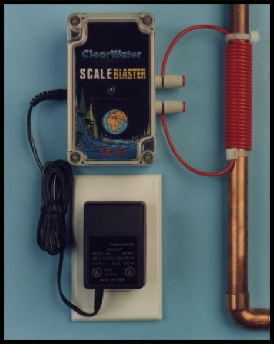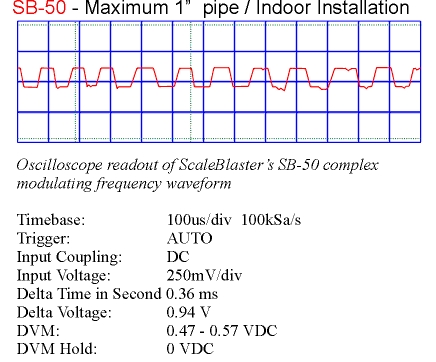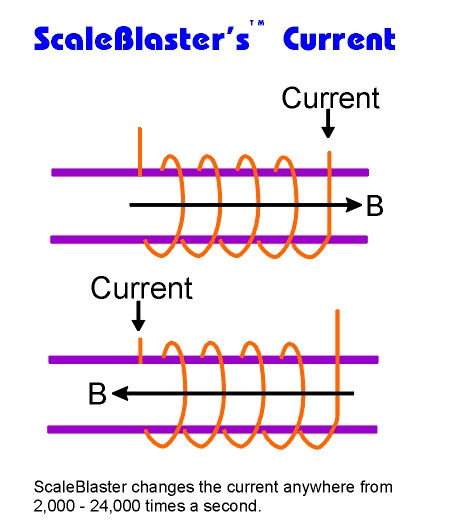| Scale
is a coating or precipitate deposited on surfaces that are in contact with hard water. The
most common form of scale is calcium carbonate. Scale is most visually evident as hard
white deposits which build up in faucets, shower heads, toilets, bath tubs, glassware in
residential houses and in commercial use such as coffee and ice makers, and in industrial
use such as cooling towers, boilers, heat exchangers and evaporators. Many billions of
dollars are lost due to equipment failure or replacement caused by scale buildup.
ScaleBlasterTM Theory
T he ScaleBlasterTM unit is composed of
a signal cable that is wrapped several times around the pipe and an electronic unit that
sends out a complex, dynamic current to produce extremely small, time-varying oscillating
fields inside the pipe. The current that produces a oscillating field is known as Ampere's
Law.
S caleBlaster'sTM
signal produces a unique square wave current that sweeps all the frequency responses from
1,000 - 12,000 Hz at a rate of 20 times a second. When the strength of the oscillating
field varies with time and changes direction, an induced current is produced inside the
pipe, a phenomenon known as Faraday's Law of Induction.

A s the induced electric field
oscillates, all particles which have an electrical charge are affected by the induced
field. This causes the unstable mineral ions to precipitate or collide with each other to
the point where the calcium carbonate crystals grow until they become so large that there
are no more surface charges left to stick to the pipe walls. These calcium molecules
precipitate into an aragonite form and flow through the system. As a byproduct of this
"snowball" effect, freed water molecules become available to remove existing
scale, molecule by molecule. |





|
